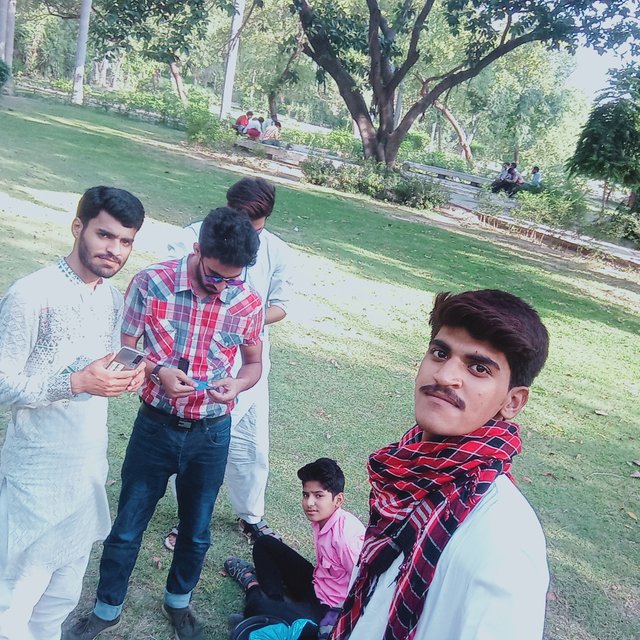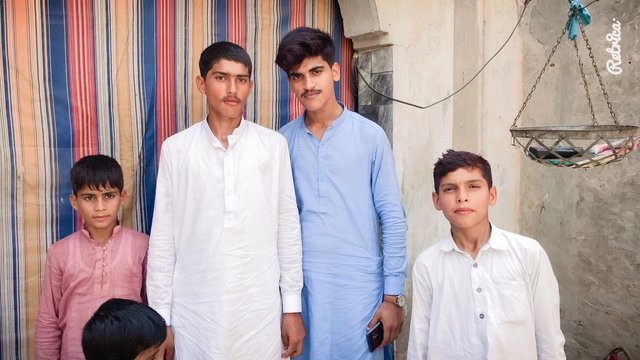Betterlife the diary game ///friendship /// by @muzammal01 date 24/06/2021
FRIENDSHIP
Friendship is a relationship of mutual affection between people.[1] It is a stronger form of interpersonal bond than an association, and has been studied in academic fields such as communication, sociology, social psychology, anthropology, and philosophy. Various academic theories of friendship have been proposed, including social exchange theory, equity theory, relational dialectics, and attachment styles.

Friendship by Petrona Viera (1895–1960)
Although there are many forms of friendship, some of which may vary from place to place, certain characteristics are present in many types of such bonds. Such characteristics include affection, kindness, love, virtue, sympathy, empathy, honesty, altruism, loyalty, generosity, forgiveness, mutual understanding and compassion, enjoyment of each other's company, trust, and the ability to be oneself, express one's feelings to others, and make mistakes without fear of judgment from the friend. Friendship is an essential aspect of relationship building skills
Developmental psychology
Childhood
The understanding of friendship in children tends to be more heavily focused on areas such as common activities, physical proximity, and shared expectations.[2]:498[a] These friendships provide opportunity for playing and practicing self-regulation.[3]:246 Most children tend to describe friendship in terms of things like sharing, and children are more likely to share with someone they consider to be a friend.[3]:246[4][5] As children mature, they become less individualized and are more aware of others. They gain the ability to empathize with their friends, and enjoy playing in groups. They also experience peer rejection as they move through the middle childhood years. Establishing good friendships at a young age helps a child to be better acclimated in society later on in their life.[4]
Based upon the reports of teachers and mothers, 75% of preschool children had at least one friend. This figure rose to 78% through the fifth grade, as measured by co-nomination as friends, and 55% had a mutual best friend.[3]:247 About 15% of children were found to be chronically friendless, reporting periods without mutual friends at least six months.[3]:250

Potential benefits of friendship include the opportunity to learn about empathy and problem solving.[6] Coaching from parents can be useful in helping children to make friends. Eileen Kennedy-Moore describes three key ingredients of children's friendship formation: (1) openness, (2) similarity, and (3) shared fun.[7][8][9] Parents can also help children understand social guidelines they haven't learned on their own.[10] Drawing from research by Robert Selman[11] and others, Kennedy-Moore outlines developmental stages in children's friendship, reflecting an increasing capacity to understand others' perspectives: "I Want It My Way", "What's In It For Me?", "By the Rules", "Caring and Sharing", and "Friends Through Thick and Thin."[12]
Adolescence
In adolescence, friendships become "more giving, sharing, frank, supportive, and spontaneous." Adolescents tend to seek out peers who can provide such qualities in a reciprocal relationship, and to avoid peers whose problematic behavior suggest they may not be able to satisfy these needs.[13] Personal characteristics and dispositions are also features sought by adolescents, when choosing whom to begin a friendship with.[14] Relationships begin to maintain a focus on shared values, loyalty, and common interests, rather than physical concerns like proximity and access to play things that more characterize childhood.[3]:246

A study performed at the University of Texas at Austin examined over 9,000 American adolescents to determine how their engagement in problematic behavior (such as stealing, fighting, and truancy) was related to their friendships. Findings indicated that adolescents were less likely to engage in problem behavior when their friends did well in school, participated in school activities, avoided drinking, and had good mental health. The opposite was found regarding adolescents who did engage in problematic behavior. Whether adolescents were influenced by their friends to engage in problem behavior depended on how much they were exposed to those friends, and whether they and their friendship groups "fit in" at school.[15]

A study by researchers from Purdue University found that friendships formed during post-secondary education last longer than friendships formed earlier.[16] In late adolescence cross-racial friendships tend to be uncommon, likely due to prejudice and cultural differences.[14]
Adulthood
Freundschaft zwischen Jonathan und David by Julius Schnorr von Karolsfeld (1860), which translates in English as Friendship between Jonathan and David
Two friends before posing for a picture.
Friendship in adulthood provides companionship, affection, as well as emotional support, and contributes positively to mental well-being and improved physical health.[17]:426
Adults may find it particularly difficult to maintain meaningful friendships in the workplace. "The workplace can crackle with competition, so people learn to hide vulnerabilities and quirks from colleagues. Work friendships often take on a transactional feel; it is difficult to say where networking ends and real friendship begins."[18] Most adults value the financial security of their jobs more than friendship with coworkers.[19]
The majority of adults have an average of two close friends.[20] Numerous studies with adults suggest that friendships and other supportive relationships do enhance self-esteem.[21]

Older adults
Older adults continue to report high levels of personal satisfaction in their friendships as they age, even as the overall number of friends tends to decline. This satisfaction is associated with an increased ability to accomplish activities of daily living, as well as a reduced decline in cognitive abilities, decreased instances of hospitalization, and better outcomes related to rehabilitation.[17]:427 The overall number of reported friends in later life may be mediated by increased lucidity, better speech and vision, and marital status.
Thanks to all to visit my Post.
Introduction Achievement 01 by @muzammal01 14/04/2021
Special Mentions
Others Detail
•Location|pakistan
•Photography|flowers
•photo ctedit|@muzammal01

I have seen your post.
Your post is very beautiful.
I like your posting style very much and I would like to say one thing to you.
If you want to comment on the message, please post it. I commented on your post.
thanks
Thank you so much @javeed9009 .Thank for visiting and commenting on my post .
@muzammal01,
Have a pleasant stay in Steemit Nursery Community, Thank you! 💐
Best regards,
Steemit Nursery Team
#affable